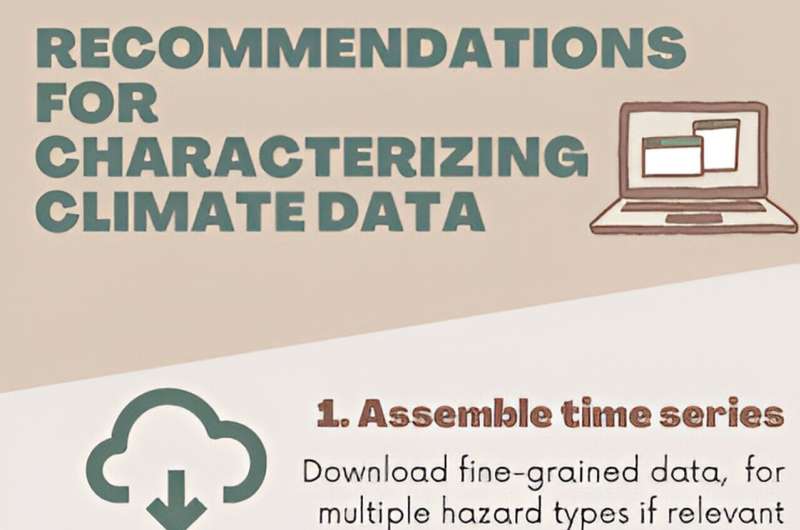This article has been reviewed according to Science X's editorial process and policies. Editors have highlighted the following attributes while ensuring the content's credibility:
fact-checked
peer-reviewed publication
trusted source
proofread
A guide on how to use climate data to inform human adaptation

A framework for combining climate and social data could help scientists better support climate change adaptation ahead of future weather-related disasters.
The Washington State University-led research draws on the expertise of climate and social scientists to show how data on different characteristics of climate variability can be used to study the effectiveness of various human responses to climate change. It could ultimately help policymakers and organizations determine where and under what conditions different climate adaptations have worked in the past and where they may work in the future.
"Our framework enables researchers across many fields to better study the relationship between characteristics of climate and adaptation, including which adaptations emerge under which conditions," said Anne Pisor, lead author of the paper in the journal One Earth and a WSU associate professor of anthropology.
"Our hope is this research will help the global community heed warnings from the recent United Nations Climate Conference (COP28) and direct adaptation funding into programs and efforts that can better support communities as they respond to ongoing change."
In the paper, the research team first explains how different characteristics of climate variability can influence the adaptations humans take to deal with problems such as a drought or a hurricane. They then identify free sources of data that scientists can use to study the link between climatic variables, such as too little rainfall, and social responses by groups of people. These responses can range from sending money to friends and family members in a disaster area to temporary relocation away from an afflicted region.
Finally, Pisor and her colleagues from WSU, University of Texas at Austin and Stanford University provide an example of how sources of climate and social adaptation data can be linked together to examine which solutions work and which do not, focusing on Africa as an example.
They linked fine grained satellite precipitation data from the Climate Hazards Group Infrared Precipitation Station (CHIRPS) database with publicly available World Bank data on remittances, or sent money, in Burkina Faso during a period that included frequent droughts. Their analysis showed a correlation between remittances and a lack of rainfall, though the relationship between remittances and drought frequency and duration were inconsistent. The authors suggest that sent money may prove useful as a coping mechanism to other climate-related disasters.
"The correlation is just a first step. It is suggestive at best and an example of how this type of work can be done," Pisor said. "Moving forward we need to expand the scope of this research by collecting data and building models that tell us things such as the lag time between a climate event and a behavior such as remittances. It will enable us to determine how long it takes for people to deploy a solution and have a positive impact and what can we do to support them."
In addition to providing an analytic framework that scientists can use to better support adaptation, Pisor and colleagues also make recommendations for how researchers can use data to better collaborate with the communities on the frontlines of climate change.
"Communities on the frontlines experience climate events differently than scientists might expect, and often have experience with which solutions work and which don't," Pisor said. "Meaningfully engaging with communities to understand their experiences can help us not only understand how adaptation happens, but also better support frontline communities as they respond."
More information: Anne C. Pisor et al, To understand climate change adaptation, we must characterize climate variability: Here's how, One Earth (2023). DOI: 10.1016/j.oneear.2023.11.005
Journal information: One Earth
Provided by Washington State University




















